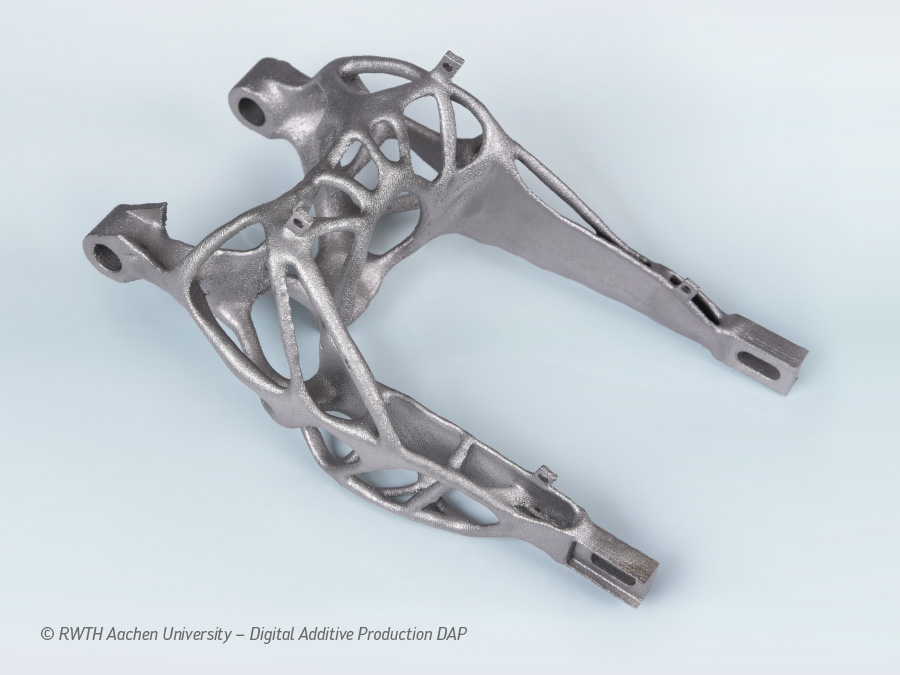As we often mention, there are two interrelated macro trends driving forward the adoption of additive manufacturing (AM) globally: supply chain insurance and sustainability. Not only does 3D printing enable the local production of parts that may be difficult to get through disrupted supply chains, but it can optimize them to be more energy efficient. For this reason, programs are unfolding globally that seek to utilize AM for these benefits.
Among them is the 3D Printing in Auto Collision Task Force, led by Harold Sears, who led Ford Motor 3D Printing Solutions for over two decades. The latest company to join the task force is Würth Additive Group, whose CEO, AJ Strandquist, has become a member, as announced at the International Bodyshop Industry Symposium (IBIS) Global Summit 2023 in Milan, Italy. Würth joins a prestigious collection of companies that include Toyota, HP, BASF Forward AM, and 3M.

Würth Additive CEO AJ Strandquist alongside Harold Sears, Jason Moseley, of IBIS Global, and Mario Dimovski, of Boyd Group. Image courtesy of Auto Collision Task Force.
By becoming a part of the organization, Würth Additive aims to support its mission to drive adoption of AM into the automotive repair industry. The company has built up its 3D printing portfolio with a unique set of equipment, including low-cost metal laser powder bed fusion systems from Kurtz Ersa, as well as highly automated vat photopolymerization machines from Rapid Shape, freeform injection molding from Arburg, and metal and carbon fiber 3D printers from Markforged. All of these fit into Würth’s larger inventory solutions, including its digital inventory management program, DIS3DP.

An optimized metal part made with a Kurtz Ersa machine. Image courtesy of Kurtz Ersa.
With the task force, Würth Additive hopes to assist in collision repair with the adoption of 3D printed parts. Using DIS3DP, it’s possible to 3D print complex parts on demand, without relying on elaborate supply chains and physical inventory. In turn, it’s possible to reduce waste and improve the sustainability of auto repair.
“I am honored to be included in the groundbreaking initiatives of this task force and for the future collaboration of this thought leadership,” said Strandquist. “I appreciate the Würth organization for supporting the vision of digital infrastructure, and Würth Additive’s unwavering commitment to these efforts. I look forward to working with my new colleagues on the task force to take the next steps in implementing additive manufacturing best practices, integrating digital inventory management solutions, and helping to shape the transformation of the automotive repair industry through the innovations of 3D printing.”
The Auto Collision Task Force and programs like it (of which there aren’t many) have immense potential going forward. Because we’ve reached peak resource supply throughout much of human society, repair work will be increasingly important to ensure the longevity of goods—the higher value, the better. Moreover, given resource scarcity, recycling represents a crucially undeveloped area. As a technology that uses only the material that is needed and as needed, 3D printing is the key production method for recycled feedstock. By using AM, not only is it possible to extend the lives of our goods, but we could do so with discarded materials.
Finally, the production of new vehicles will be harder to justify as the reality of resource scarcity filters into markets and consumer society. Even harder to justify will be the use of fossil fuel-powered, personal cars. Instead, it will be more realistic to maintain and retrofit existing vehicles with alternative fuel drivetrains, including battery- and hydrogen-powered motors. AM is most equipped for such a task, not only because it can optimize 3D printed parts for these new drivetrains, but also because it isn’t limited to a one-size-fits-all approach but can be applied to any type of vehicle that comes into the shop.
Once the task force proves itself, which is inevitable, we’re sure to see such programs proliferate regionally and globally.
Subscribe to Our Email Newsletter
Stay up-to-date on all the latest news from the 3D printing industry and receive information and offers from third party vendors.
You May Also Like
Further Understanding of 3D Printing Design at ADDITIV Design World
ADDITIV is back once again! This time, the virtual platform for additive manufacturing will be holding the first-ever edition of ADDITIV Design World on May 23rd from 9:00 AM –...
3D Printer Maker EVO-tech Reborn as NEVO3D — Once More With Feeling
EVO-tech was a 3D printing service and original equipment manufacturer established in 2013 and based in Schörfling am Attersee, Austria. The company produced high-quality material extrusion systems featuring linear bearings,...
3D Systems Brings 3D Printed PEEK Cranial Implant to the U.S. with FDA Clearance
For more than 10 years, 3D Systems (NYSE:DDD) has worked hand-in-hand with surgeons to plan over 150,000 patient-specific cases, and develop more than two million instruments and implants from its...
CDFAM Returns to Berlin for Second Annual Symposium
The second CDFAM Computational Design Symposium is scheduled for May 7-8, 2024, in Berlin, and will convene leading experts in computational design across all scales. Building upon the first event...































